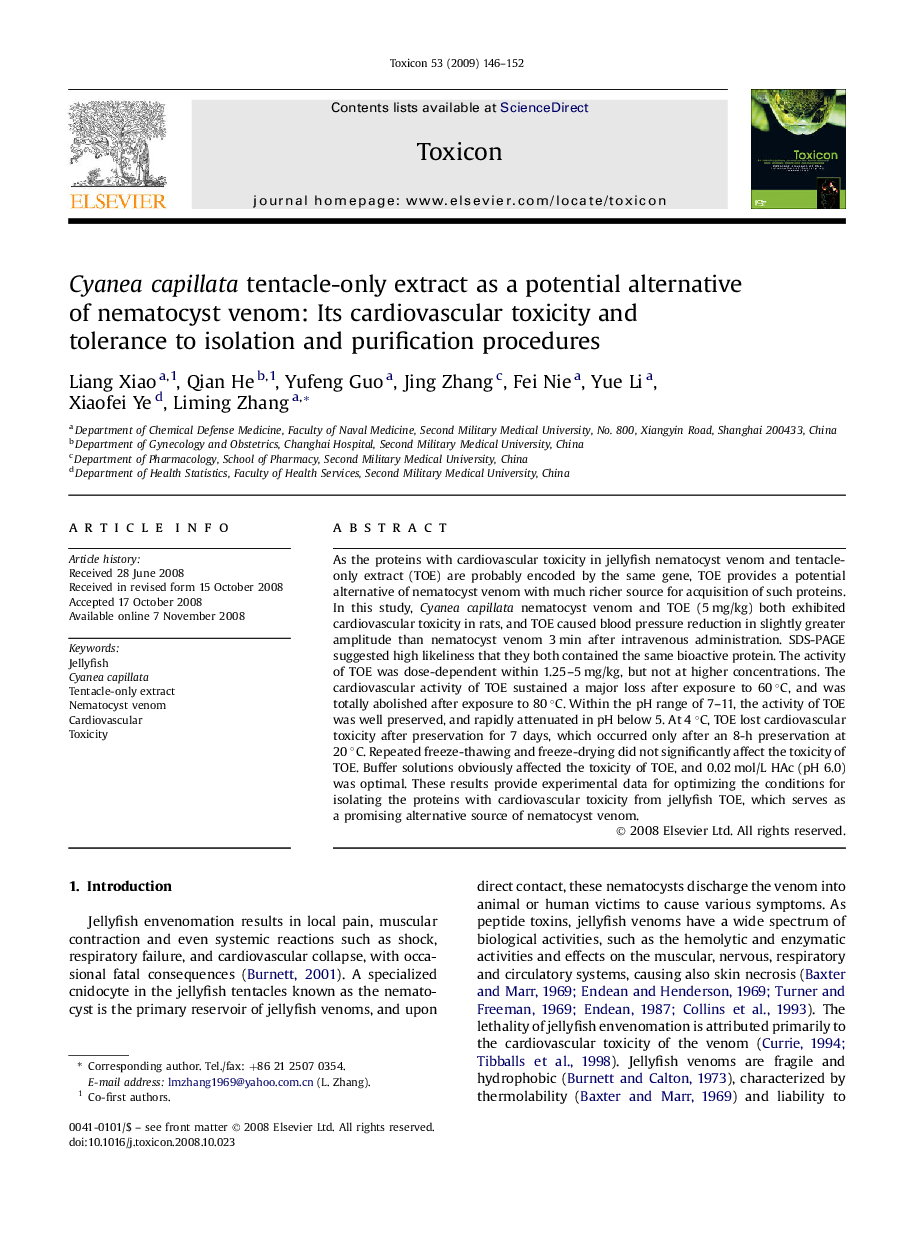| Article ID | Journal | Published Year | Pages | File Type |
|---|---|---|---|---|
| 2066504 | Toxicon | 2009 | 7 Pages |
Abstract
As the proteins with cardiovascular toxicity in jellyfish nematocyst venom and tentacle-only extract (TOE) are probably encoded by the same gene, TOE provides a potential alternative of nematocyst venom with much richer source for acquisition of such proteins. In this study, Cyanea capillata nematocyst venom and TOE (5 mg/kg) both exhibited cardiovascular toxicity in rats, and TOE caused blood pressure reduction in slightly greater amplitude than nematocyst venom 3 min after intravenous administration. SDS-PAGE suggested high likeliness that they both contained the same bioactive protein. The activity of TOE was dose-dependent within 1.25-5 mg/kg, but not at higher concentrations. The cardiovascular activity of TOE sustained a major loss after exposure to 60 °C, and was totally abolished after exposure to 80 °C. Within the pH range of 7-11, the activity of TOE was well preserved, and rapidly attenuated in pH below 5. At 4 °C, TOE lost cardiovascular toxicity after preservation for 7 days, which occurred only after an 8-h preservation at 20 °C. Repeated freeze-thawing and freeze-drying did not significantly affect the toxicity of TOE. Buffer solutions obviously affected the toxicity of TOE, and 0.02 mol/L HAc (pH 6.0) was optimal. These results provide experimental data for optimizing the conditions for isolating the proteins with cardiovascular toxicity from jellyfish TOE, which serves as a promising alternative source of nematocyst venom.
Related Topics
Life Sciences
Biochemistry, Genetics and Molecular Biology
Biochemistry, Genetics and Molecular Biology (General)
Authors
Liang Xiao, Qian He, Yufeng Guo, Jing Zhang, Fei Nie, Yue Li, Xiaofei Ye, Liming Zhang,
